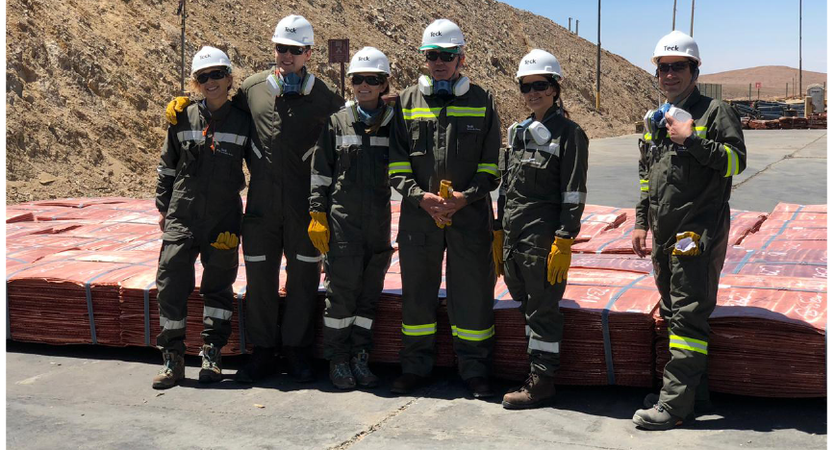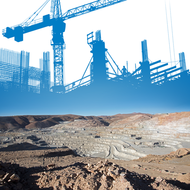Our people have been, and will continue to be, at the heart of what drives major projects like QB2
From building trust with communities of interest, to laying the physical foundation for construction, to keeping species in the region safe as work advances, Teck’s employees are what make it all possible.
A New Way of Working
When QB2 is in operation, it is expected to employ a workforce of approximately 2,000 employees and contractors, and will be Teck’s largest operation. And while physical construction of the project is the primary focus right now, so is planning for the workforce that will run this state-of-the art operation.
“At QB2 there will be a change in the work itself—new technologies and physical workplaces—so we want to make sure we train and recruit a workforce that can succeed in this era of work,” says Stephanie Shaw, Manager, Human Resources, Teck Chile. “To help support that, we’re envisioning a ‘QB2 Way’, which builds on the foundation of Teck’s values and will reflect the changing expectations of a future workforce and that will position QB2 for success.”
Walking the Talk
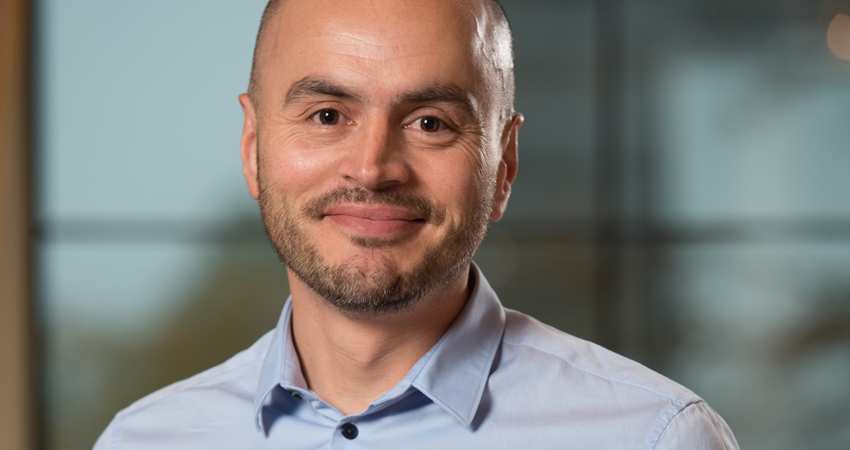
Herman Urrejola, Social Responsibility Manager, Teck Chile
Maintaining good relationships with communities surrounding our operations is essential to Teck’s continued success. Herman Urrejola, Social Responsibility Manager, Teck Chile, opens every dialogue with that in mind, with a sincere desire to find mutual interests between our company and our communities of interest.
Since joining Teck in 2012, Herman, an Excellence Award winner in the category of Environment and Sustainability, has been dedicated to establishing collaborative relationships with communities of interest for our existing operations in Chile but particularly in recent years, laying the foundation for those around QB2.
A key example of this was in February 2017, when Herman played an integral role in reaching an agreement with a group of fishing unions in the coastal zone of Tarapacá, Chile which provided stability to the permitting stages of QB2.
He and his team have been able to reach final agreements with eight Indigenous communities in the region around QB2.
“Through his leadership, respect for values, and appreciation for culture and history, Herman was able to create inroads for mutual success in consultations with Indigenous communities,” says Chris Dechert, Vice President, South America. “He is personally invested in ensuring that both Teck and the communities of interest reap the benefits from trust-based, socially responsible agreements.”
Collaborative Growth
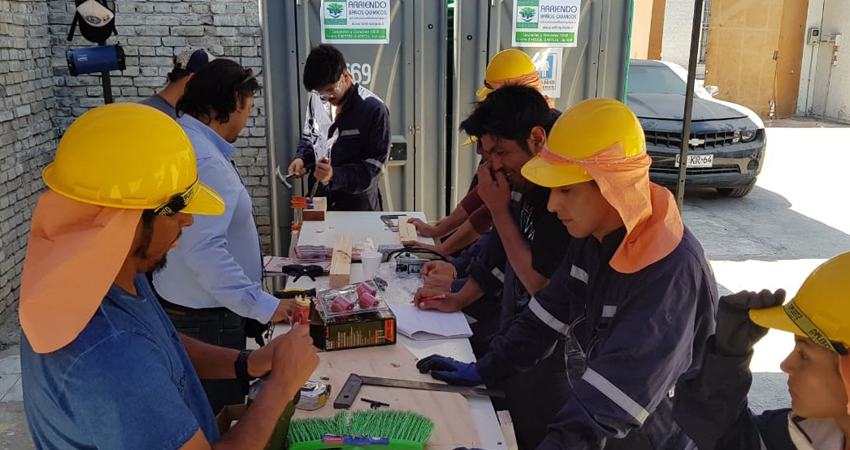
In order to help grow the workforce that will be required during the construction phase of QB2, Teck and Fundación Chile have partnered over the past two years on a new training program, Choose to Develop (Elige Crecer).
Choose to Develop aims to build local employability and availability of regional suppliers through a variety of training programs offered free of charge to eligible participants. The initiative is open to residents in communities in the Tarapacá Region and has been promoted through municipalities, government entities, local organizations, unions and at trade fairs.
Programs range from 120 to 150 hours of work and include trades such as masonry, carpentry, and concrete laying, as well as training for positions in food services and hospitality.
And while training offered through Choose to Develop centres around labour skills for employment during the construction phase of the project, it is also designed to establish foundational skills that participants can later build on to transition into operational positions at the mine.
“It is our mission to maximize the opportunities for communities around QB2,” says Luis Aylwin, Organizational Development Manager, Teck Chile. “Through programs like this, we are able to support local training and recruitment, and work to build a sustainable supply chain.”
Focus on Biodiversity: Protecting the Tiny Tern
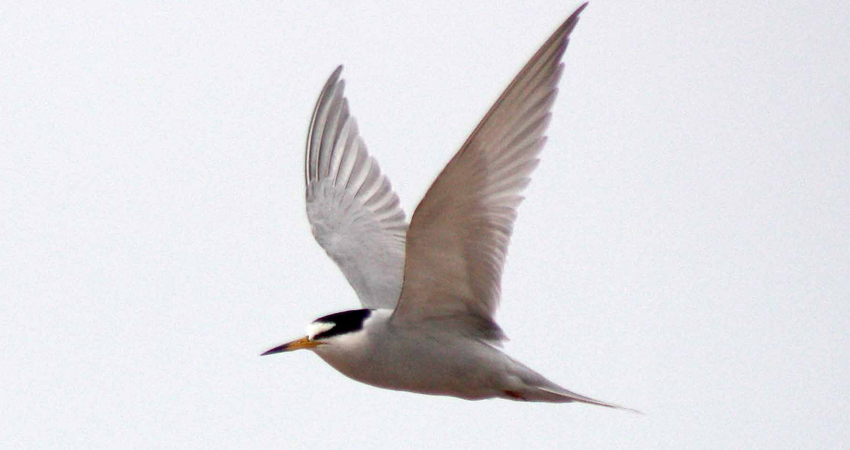
Even with a project as large as QB2, ensuring a safe and sustainable future for the tern, the smallest bird found in Chile, remains a top priority.
While the terns’ migration pattern is not entirely understood—movement has been tracked between Ecuador and the Antofagasta region of Chile—they tend to nest in Chile’s coastal zone, near the port region where new infrastructure will be built to support QB2.
Today, there are only approximately 2,000 terns left around the world. The population decrease of these birds is primarily attributed to a global decline in anchovy stocks (their main food source), threats of predators (such as dogs, foxes and other birds of prey) and the loss of nesting land.
With this in mind, one of the key environmental measures voluntarily undertaken in order to sustainably advance QB2 is a protection management plan for the tern, which in part relies on the support of our greatest asset—our people.
“Preservation of this migratory bird is of the utmost importance, and a key part of making this happen will involve the help of those on the front line,” explained Ernesto Vásquez, Senior Advisor, Environment, QB2, who is a biologist working for Teck on the project.
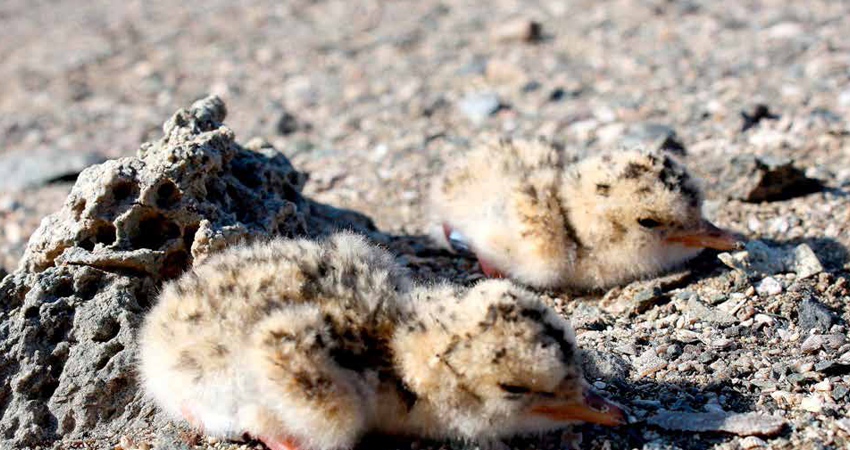
“Procedures established in the protection management plan include educational materials on the tern and steps to take in the event a nest is found in the course of work at site. This information has been built into the onboarding process for all employees and contractors working on the project.”
Other elements of the initiative include monitoring and reporting the presence of new nesting locations, and establishing protected zones with clear signage in the area of Ike-Ike Beach.
Cristián Berríos, Communities Coordinator, QB2, adds: “As a part of our long-term commitment, we are taking responsibility for balancing the significant economic and social benefits of this project with conservation of the local environment.”
